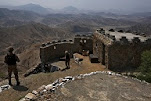While some believe the industry faces an acute shortage of seafarers, others say this is simply not true and not borne out by the situation on the ground, while some point to a mismatch in supply and demand, and a failure by the ship owners to provide cadet berths.
Setting the scene in the opening sessions of the conference Guy Platten, Secretary-General of the International Chamber of Shipping (ICS) detailed the expected shortage of officers.
” According to the latest ICS/Bimco study, 96,000 seafarers short by 2026. That's a huge challenge. That's certified officers we're going to be short of, so that's something that we need to embrace,” Platten said.
The move to alternative low and zero carbon fuels will complicate things yet further with research commissioned by the Just Maritime Transition Coalition showing that up 800,000 seafarers will require additional training by the mid-2030’s so as to be able to use alternative fuels safely.
The extreme lack of diversity in the seafaring workforce of which just 2% is female was highlighted as an issue that needed to be addressed. “Diversity is on the agenda and is going to be a very hot topic,” stated Andreas Nordseth, Director General of the Danish Maritime Authority told the conference. “We have to find out what to do. It’s not just to do with fairness of gender.”
Nordseth said that have a more diverse is better for safety, retention and a wide range of factors.
Platten was in agreement saying, “It’s a disgrace really that only 2% of our workforce is women. And we're just missing out so much talent and with the digitalization with technologies, with all that's happening, we've got a golden opportunity to change that.”
The crew supply forum later on in the first day of the conference grappled further with the issue of the shortage of officers.
The lack of cadet berths was highlighted as an issue along with the longstanding huge mismatch between the numbers of graduates from Philippines maritime schools and academies and the actual number that ever work on board a ship. Philippines maritime schools churn out around 25,000 – 30,000 graduates annually yet only around an estimated 5,000 of those will ever serve on board a merchant vessel.
It was an issue pressed by conference chairman John Adams, Senior Advisor to V.Group, and whether it related anyway to the quality of the training and issues such as STCW compliance.
Iris Baguilat, President of Dohle Seafront Crewing, questioned the lack of cadet berths and the long-term commitment of ship owners to Filipino seafarers. As to why so few Filipino graduates managed to get jobs at sea she said, “It’s a question you have to ask the ship owners, why are they not hiring our graduates.”
Marlon Rono, President and CEO, of Magsaysay People Resources Corp, said, “That really is a big issue, and one is because not so many ship owners take cadets.” Rono highlighted the policy of Japanese ship owners that two cadets have to be taken on every ship, and if cadets are not taken there is penalty levied to a fund for training. The result is it is better to take cadets than not.
Speaking from the audience Kuba Szymanski, Secretary General of Intermanager, said he did not believe there was a shortage of crew noting that in a capitalistic world if there is a shortage of something the price goes up. “Do you see salaries going up now except LNG? I’m sorry, no, and if there are its only 1% to 2%,” he said.
As many as 800,000 seafarers serving global shipping will need up skilling by the mid-2030’s to meet the industry’s decarburization ambitions according to research commissioned by the Maritime Just Transition Task Force.
The task force launched a 10-point action plan at COP27 based on the new research which it commissioned from DNV Maritime’s consultancy modeling three different scenarios for decarburization of shipping through to 2050. The Maritime Just Transition Task Force was launched at COP26 last year bringing together UN Global Compact, the International Chamber of Shipping (ICS), and International Transport Workers Federation (ITF) with an aim to ensure seafarers at the frontline of decarburization were properly looked after and trained in shipping’s energy transition.
The research modeled three scenarios based on the original IMO 2018 targets of a 50% emission reduction by 2050, zero carbon by 2050, and decarburization by 2050.
The zero carbon by 2050 scenario, modeled Lloyds Register and University Maritime Advisory Services (UMAS), foresees 450,000 seafarers would require some additional training by 2030, and 800,000 by the mid-2030’s to handle alternative fuels.
Under the decarburization by 2050 scenario, modeled by DNV, 750,000 seafarers would require additional training by 2050, and under the IMO 2018 scenario, also modelled by DNV between 310,000 and 750,000 seafarers would require additional training by the 2040’s.
Guy Platten, Secretary General, International Chamber of Shipping, said, “There is an urgent need to establish the infrastructure and training required to prepare our seafaring workforce, both in developed and developing countries, to help meet our decarburization objectives. This should be done as of today, so they are ready and able to meet the challenges that new green fuels and propulsion technologies will pose and mitigate any potential health and safety risks for ships, communities, the environment and seafarers themselves.”
The Action Plan makes recommendations to industry, governments, seafarer unions and academia in terms of meeting the challenge of training for alternative fuels. Recommendations include: strengthening global training standards, ensuring a health-and-safety-first approach, and establishing advisory national maritime skills councils.
While the urgent need for training is clear which fuels this training need to be for is not. In its general conclusions the report notes a lack of clarity viability and uptake of alternative fuels, and uncertainty over regulatory developments and finance made it difficult to plan further training for seafarers.
The safety of handling for alternative fuels was stressed by the ITF. “The good news is that seafarers are prepared and willing to be part of this transition. But crew want to know that the fuels they’re handling are indeed safe, and that we as an industry have the training pathways established to upgrade their skills,” Stephen Cotton, General Secretary of the International Transport Workers’ Federation (ITF).
Safety was also stressed by DNV Maritime CEO, Knut Ørbeck-Nilssen, who said: ”Decarburization is bringing new opportunities, new technologies but also new risks. Our first priority must be to achieve safe decarburization. We must take a collaborative approach to safeguard our people, our ships and our environment.”
In terms of the regulatory challenge IMO Secretary-General Kitack Lim said it would be in “sharp focus” in a review of the STCW Convention.












